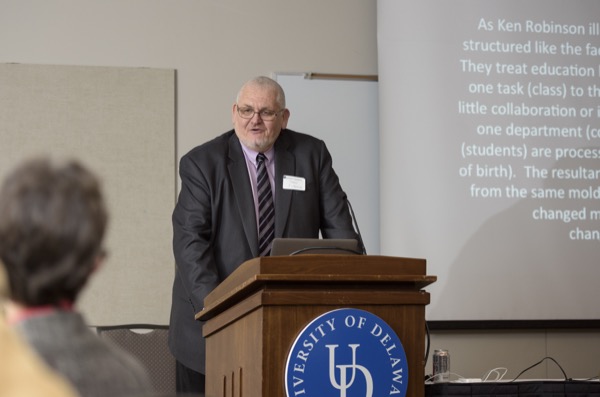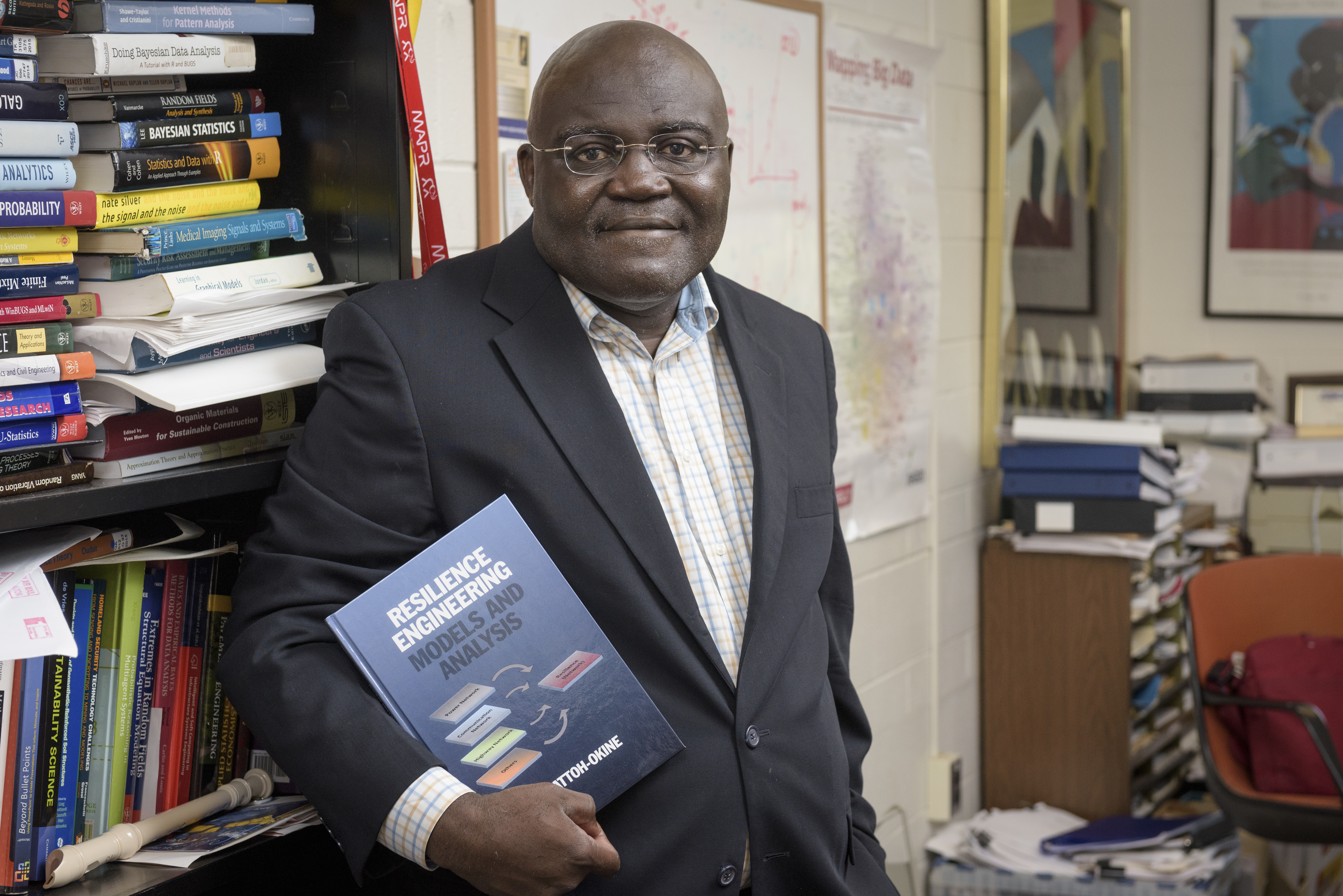
Adding the arts
Jungck discusses 'STEAM' approach to interdisciplinary learning
8:06 a.m., Dec. 8, 2015--The University of Delaware’s John Jungck would like to see a greater appreciation of the arts in science, technology, engineering and mathematics (STEM) education.
Professor and director of the DuPont Interdisciplinary Science Learning Laboratories, the instructional wing of UD’s Harker Interdisciplinary Science and Engineering Laboratory, Jungck explained his views on valuing the arts in the sciences during a luncheon meeting of the University of Delaware Association of Retired Faculty held Tuesday, Dec. 1, in Clayton Hall.
People Stories
'Resilience Engineering'
Reviresco June run
A theoretical biologist specializing in molecular evolution, evolutionary bioinformatics, image analysis and mathematical biology education, Jungck favors the “STEAM” learning approach, which includes the arts in STEM studies.
Studies show that students learn more when they see that mathematics is not something boring or utilitarian but is beautiful, engaging, and addresses many important issues, Jungck noted.
“As a scientist, I like Picasso’s statement that ‘Every child is an artist. The problem is how to remain an artist once we grow up,’” Jungck said, adding, “I’m interested in how life inspires design, whether it’s from an engineering or artistic perspective.”
One of many notable areas where the oral-visual culture helps shape the way scientists and artists view the natural world can be found in the work of Daina Taimina, who in 1997 discovered how to make physical models of the geometry known as hyperbolic space using the art of crochet.
While many mathematicians believed that it was impossible to construct such forms, it was found that nature had been embodying hyperbolic geometry in its anatomies, including organisms such as corals.
A hyperbolic crochet coral reef created by Margaret and Christine Wertheim of the Institute for Figuring was a popular display item during a Smithsonian Institution exhibition held from October through April 2011.
“This hyperbolic environment has influenced a great deal of mathematics, and what can be done with this kind of structure,” Jungck said. “It is this conjuncture of art, science, mathematics, handicrafts and ecological activism that really inspires me about art and science to collaborate on some very interesting things.”
Seeing has the capacity to alter both the seer and the thing seen, as noted in the book The Object Stares Back, by author James Elkins, and visualized in the 1977 short scientific film The Powers of Ten, directed by Charles and Ray Eames.
After Elkins stated “the world is flooded with light, and everything is available to be seen, and with the help of science, we can see galaxies, viruses and the inside of our own bodies. … Seeing does not interfere with the world or take anything from it. It does not hunt, hurt or damage anything. It is detached, efficient and rational,” he added that, “The truth is more difficult. Each one of those ideas is completely wrong. Seeing is irrational, inconsistent, and undependable.”
Instead of looking for the universal, perfect archetype, Jungck remarked that today’s evolutionary biologists are involved with the measurement of messy, ephemeral phenonena.
“What 21st century mathematics allows us to do is to study that kind of variation, to do fuzzy logic and fractal geometry in a whole new way that lets us see the world in a whole new way,” Jungck said. “An appreciation of the arts in STEM education may give students a more expansive view of these areas and help them become more deeply involved in their education.”
Article by Jerry Rhodes
Photo by Kathy F. Atkinson








